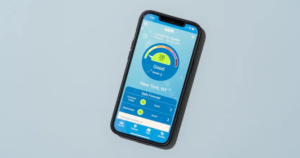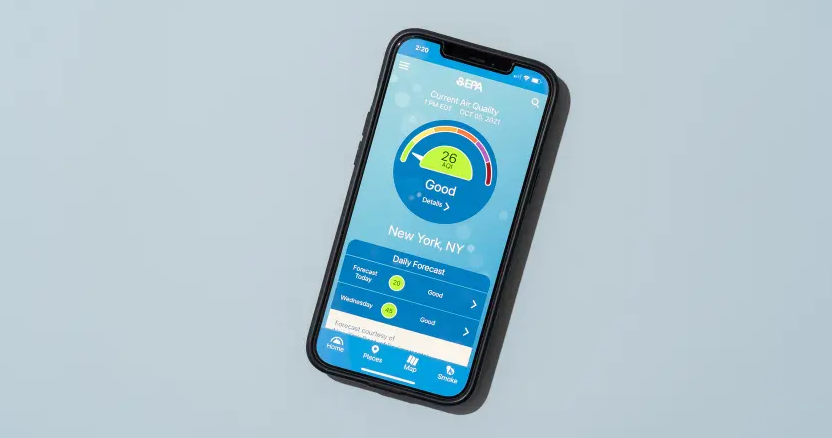Designing a portable device to measure air quality involves integrating sensors, power sources, data processing units, and user interfaces into a compact, durable package. The goal is to provide real-time measurements of air pollutants, such as particulate matter (PM), gases, and other harmful substances, in a way that is accessible to individuals, businesses, or health professionals. Here’s a structured approach to developing such a device:
1. Define Key Air Quality Parameters
To monitor air quality effectively, you need to focus on key pollutants. Common parameters include:
- Particulate Matter (PM): PM2.5 and PM10 particles are commonly used indicators of air pollution. PM2.5 refers to particles smaller than 2.5 microns, which can be harmful when inhaled.
- Gaseous Pollutants: Key gases include:
- CO2 (Carbon Dioxide): High CO2 levels can indicate poor ventilation.
- N
- O2 (Nitrogen Dioxide): A common byproduct of combustion.
- CO (Carbon Monoxide): A toxic gas often from fuel-burning appliances.
- O3 (Ozone): High levels can lead to respiratory issues.
- VOC (Volatile Organic Compounds): These can come from paints, solvents, cleaning products, etc.
- Temperature and Humidity: These factors also influence air quality and human health.
2. Select the Right Sensors
The sensors you choose should be accurate, compact, and low power. Common sensors for portable devices include:
- Particulate Matter Sensors: Laser scattering sensors or light scattering technology (e.g., Shinyei PPD42NS for PM2.5 detection).
- Gas Sensors:
- Electrochemical sensors for detecting gases like CO, NO2, O3, and VOCs.
- Non-Dispersive Infrared (NDIR) sensors for CO2 and other gases.
- Humidity and Temperature Sensors: Sensors like the DHT22 or BME280 are suitable for these parameters.
3. Power Supply
A portable device should have a long battery life, ideally lasting for hours or days on a single charge. Consider the following power options:
- Rechargeable Lithium-Ion Batteries: Provide a compact and long-lasting power source.
- Low Power Consumption: Use low-energy sensors, and make the device power-efficient, possibly by entering a low-power sleep mode when idle.
- Solar Charging (Optional): For extended use outdoors, integrating a small solar panel for trickle charging could be a useful feature.
4. Data Collection and Processing
- Microcontroller or Microprocessor: The heart of the device, responsible for controlling sensors, processing the data, and managing communication. Suitable options include:
- Arduino or ESP32/ESP8266: Affordable, versatile, and commonly used in DIY and portable devices.
- Raspberry Pi Zero (for more complex needs): Offers more computational power for advanced processing.
- Data Storage: For continuous monitoring, local storage (like an SD card) or cloud-based storage via Wi-Fi or Bluetooth can be used.
- Data Processing: You can integrate algorithms to process the raw data from sensors, convert it into usable air quality index (AQI) values, and display it.
5. User Interface
- Display: A small screen (LCD or OLED) to show real-time air quality data. The display should be easy to read, even in bright sunlight.
- Mobile App Integration: For advanced features, consider connecting the device to a mobile app via Bluetooth or Wi-Fi. The app could offer additional features, such as:
- Storing historical data.
- Providing alerts when air quality reaches unsafe levels.
- Displaying a detailed analysis of various pollutants.
- Buttons/Controls: A few simple buttons for navigation or a touch screen for interaction.
6. Data Transmission (Optional)
- Wireless Connectivity: For real-time monitoring or uploading data to the cloud, integrate Wi-Fi (e.g., ESP8266/ESP32) or Bluetooth (e.g., Bluetooth Low Energy – BLE).
- Mobile App or Web Interface: Enable remote access to air quality data via a mobile app or web interface, allowing users to track long-term trends.
7. Calibration and Accuracy
- Calibration: To ensure accurate measurements, the sensors should be calibrated regularly. Some sensors are factory-calibrated, while others might require user calibration. You can also provide a way for the device to recalibrate based on external references or in certain conditions.
- Accuracy: Pay attention to the accuracy of each sensor, ensuring that the readings are reliable. For portable devices, balance the need for accuracy with the size, cost, and power requirements.
8. Design and Durability
- Compact and Lightweight: A portable device should be small enough to carry and lightweight enough for comfortable use.
- Enclosure: Use a durable and weather-resistant casing to protect internal components. Waterproofing and shockproofing are crucial if the device is used outdoors.
- Ergonomics: Consider how users will interact with the device, making sure it is comfortable to hold and easy to use.
9. Cost and Affordability
- Cost of Sensors: While high-quality sensors may be expensive, you need to balance performance with cost-effectiveness. Some sensors might not provide laboratory-level accuracy but may still offer sufficient data for personal use.
- Target Audience: If you’re designing for consumers, consider price sensitivity and aim for a competitive price point while maintaining quality and durability.
10. Testing and Validation
- Prototype Testing: Build a prototype and test it under various environmental conditions to ensure that it works correctly and is reliable.
- Validation against Professional Equipment: Compare the readings of your portable device with those from certified air quality monitoring stations to validate its accuracy.
11. Regulatory Compliance (if applicable)
Ensure that the device complies with any local regulations or standards for environmental monitoring, and obtain certifications like CE or FCC if the device will be sold commercially.
Final Thoughts
Once the design is finalized, it’s essential to focus on ease of use, portability, and reliability. A portable air quality monitoring device can be a valuable tool for individuals concerned about their environment, providing real-time feedback that can help them make informed decisions about their health. Would you like assistance with any specific part of the design process, like choosing sensors or developing a mobile app for the device?

Also Read :
